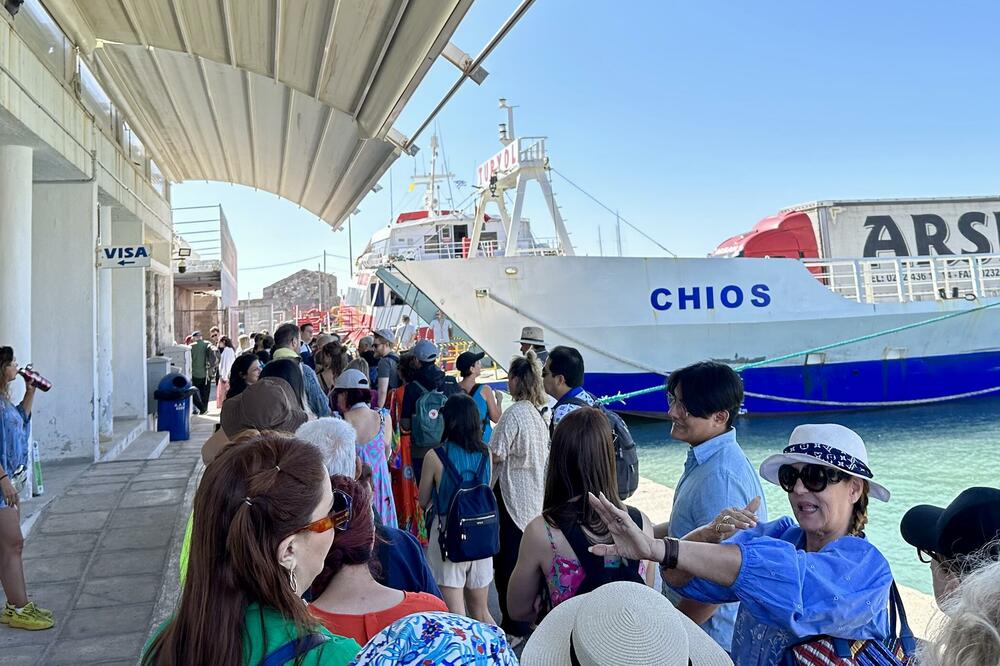The morning promised to be hot. In the ferry port of Cesme, passengers bound for Chios stand in lines in front of the passport control counters. It is not easy to leave Turkey in the direction of the European Union, which is ten kilometers away from here. The return ticket for that route costs 40 euros. The ferry "Chios" is half an hour late in departure. After half an hour's drive, we sail into the port of the capital, which, like the island, is called Chios. After disembarking, the first entertainment is waiting in a long line next to a dilapidated building by the sea. It's Greek passport control. And finally we arrive in the city. The view of the dock next to the pier does not promise much. Trucks maneuvering, some disappearing in the bowels of the ferry, others have just left and are waiting in the parking lot for the crowd to pass. A little further we come across a sign that directs us to the western or northern part of the city. We turn right, towards the center.
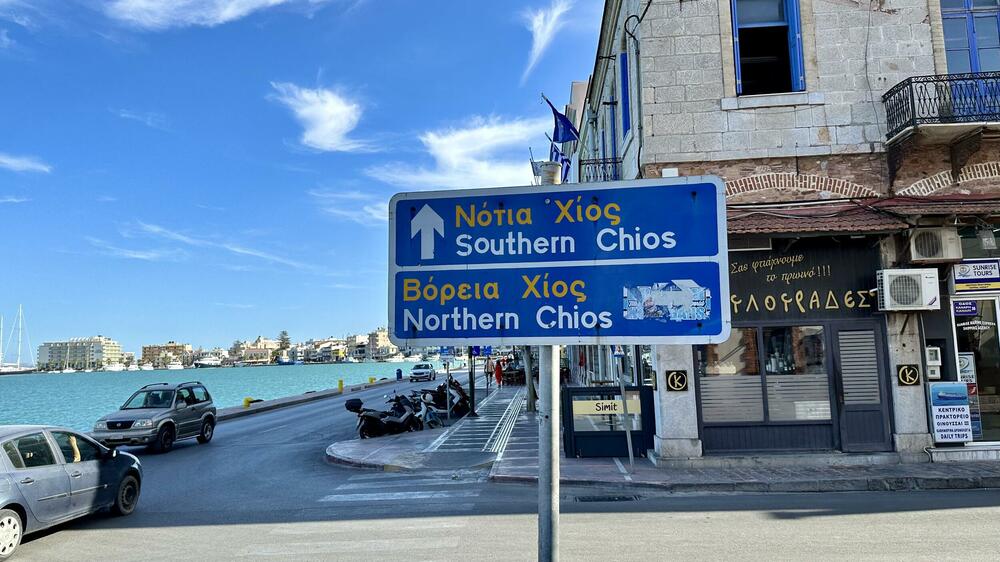
At the tourist information office, a friendly lady gives us several tips, but the most important of them is - where to drink good coffee and gather strength for the day. She sent us straight to the fort.
Breakfast among the ramparts
And behind the ramparts, a surprise awaited us - a beautiful square with a tangle of alleys around it and the first-class cafe Segreto est23. We had breakfast there with light jazz, enjoying real cappuccino. Eventually, Venice and Genoa ruled the island for over three centuries. We headed through the alleys full of surprises. A small church, a restaurant garden among the ruins or a tower at the end of an ordinary street make this symbiosis of a town and a fortress an exceptional place.
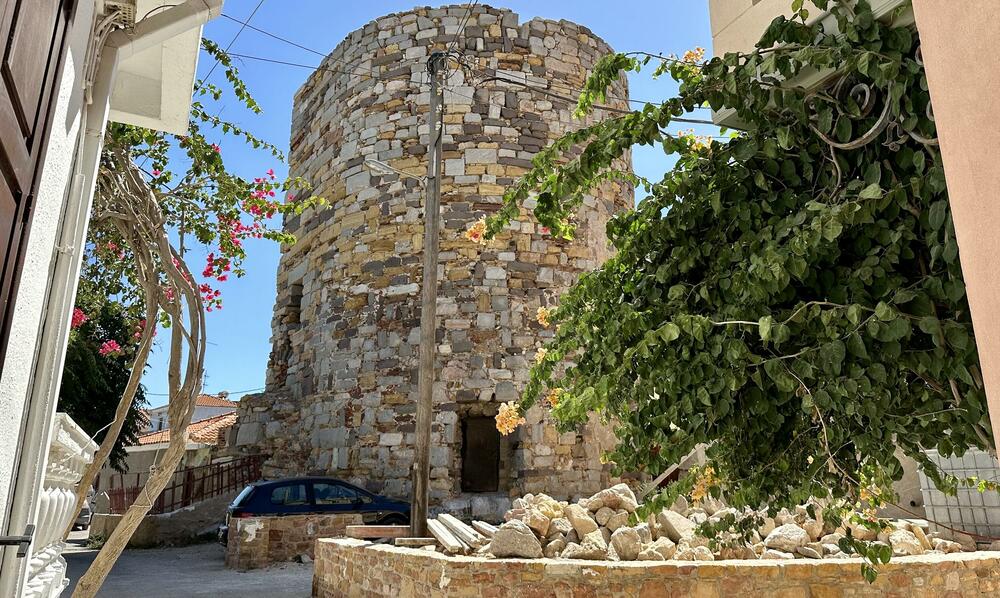
We also pass by the Church of St. George, which seems to sum up the historical destiny of the entire island. In the 10th century, Byzantium built thick walls towards the sea and a church in the fortress. The Genoese, as the new masters, turned the Orthodox Church into a Catholic one. It is said that Giovanni Giustiniani Longo, commander of the defense of Constantinople in 1453, was buried here. A ship brought him wounded after the fall of Constantinople to die on his native island. He was buried in the local cemetery, but the earthquake of 1881 destroyed every trace of his grave. The Ottomans conquered the island more than a century after the fall of Constantinople. They turned the church into a mosque, and the full circle closed when, after ten centuries, the Greeks again turned the place of worship into an Orthodox temple.
However, the Ottoman era also left some impressive traces. We come across a well-preserved Turkish bath.
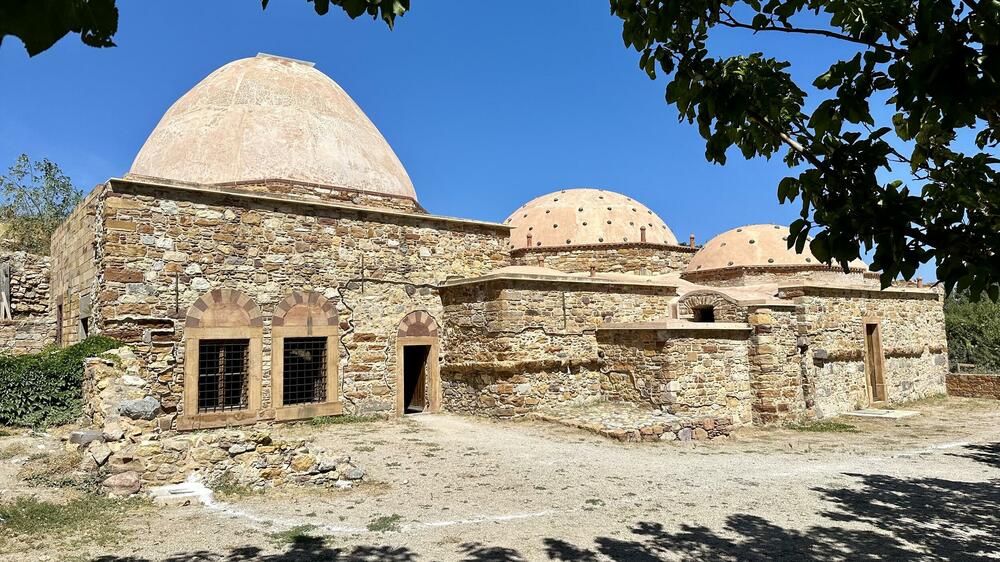
Entrance is free. Here the stone whispers and the light that comes through the dome, shadows sway in the mysterious lower chambers. The bubbling of the water, its splash on the stone, its dispersion in the light is missing. But the water was drunk by time.
The Wrath of Achilles
We return from the fortress, which is between the port and the center, and we come across a modern building with a white bust in the greenery next to it. "Omiros" is written below the bearded figure. This reminds us of the fact that the Asia Minor coast of the "White Sea", as sailors sometimes called the Aegean, is actually the birthplace of European poetry. European culture has its roots in a man named Homer. And the first word of the key song - the Iliad - is "wrath" or "wrath". From this we can conclude that Europe was born on the coast of Asia Minor from a sung anger: "Sing my anger, goddess, Achilles, son of Peleus". The beginning of the Iliad. This anger of Achilles has causes. First, because the commander of the Greek army, Agamemnon, took his favorite slave, so the furious hero withdrew from the Trojan War, and the Greeks began to lose. And then he triumphantly returns to war. And again furious because his lover Patroclus - and not his friend, as many European textbooks chastely state - was killed by the Trojan Hector.
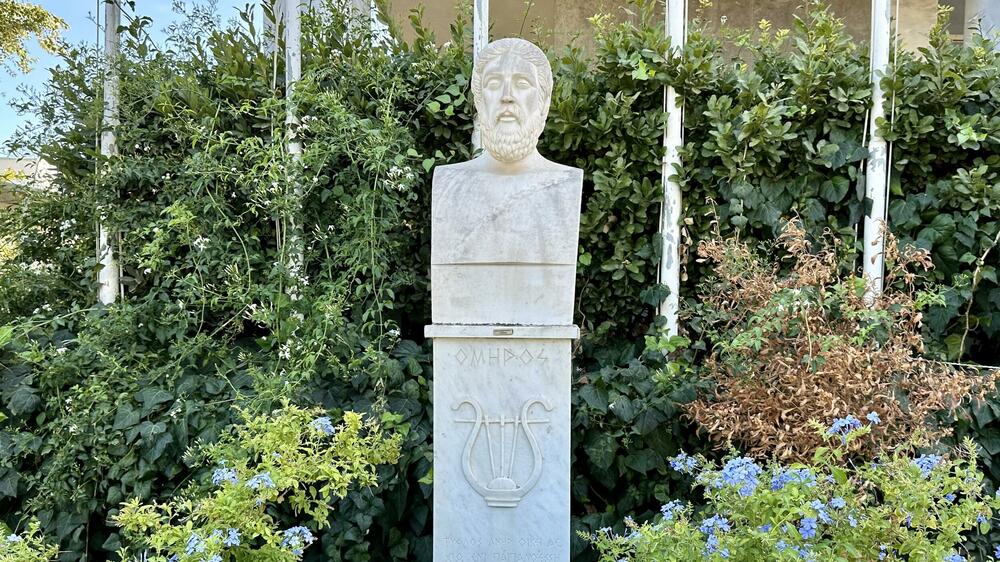
Many Greek or former Greek places claim that Homer was born in them. Aside from the "Homeric question" - was Homer a man or just a mythical vessel for the oldest Greek epics. Candidates who celebrate Homer as their countryman and neighbor range from Smyrna to Athens, from Rhodes to Ithaca or - Chios.
Chios, next to Smyrna, seems to be the most likely location of Homer's birth. A Greek family from the island claims that Homer was born there, and that the name of their village preserves the memory of the famous blind poet, who sang about the Trojan War and Odysseus' wanderings with his guitar. On Chios, stories are told about "Homer's rock" where he supposedly taught the youth about poetry. That's why I'm not surprised by the bust of Homer near Homerion - the main cultural center on the island.
Aeda Island
The ancient Greeks called their poets Aedes. We can't be sure about Homer, but the legendary composer without whom there would be no Zorba the Greek, Mikis Theodorakis, was certainly born on this island.
On the Main Square with the fountain, I come across a distant relative of Homer or Theodorakis. His guitar is a bouzouki, and that morning he will sing sad and happy songs about his homeland.
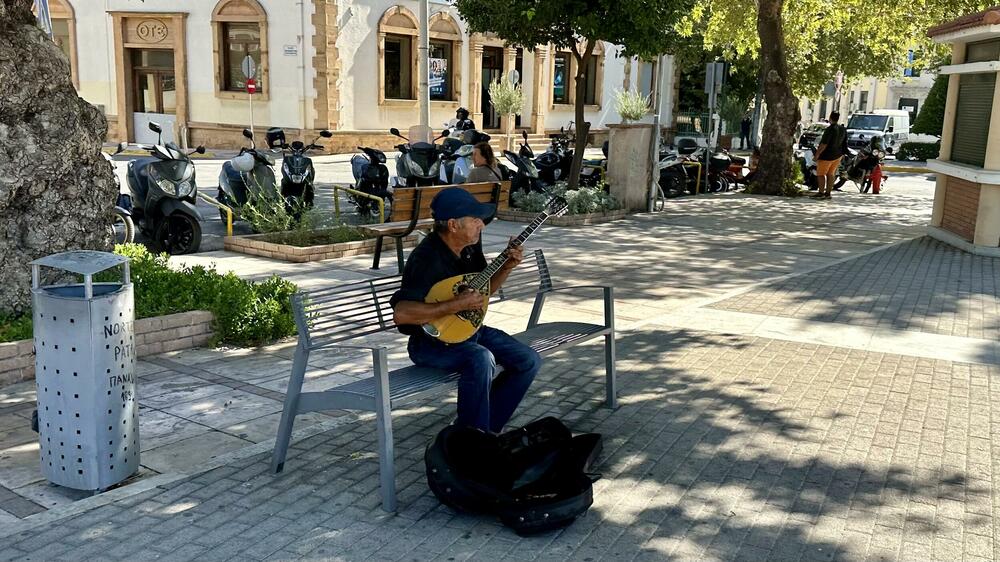
We start from the Main Square towards the pedestrian zone. And we immediately stumble upon a mosque that is no longer that. This seems to be the fate of these shores - churches that are no longer churches, mosques that are no longer mosques.
Medjidija was built in 1846. During his visit to Chios, Sultan Abdulmejid I encouraged the construction of a mosque outside the fortress walls. With this, he left a sign on the island, which was overwhelmingly Christian, that as a religious and secular ruler - caliph and sultan - he was still a Muslim - although he was known as a reformist who wanted to integrate the awakened non-Muslim masses into his empire.
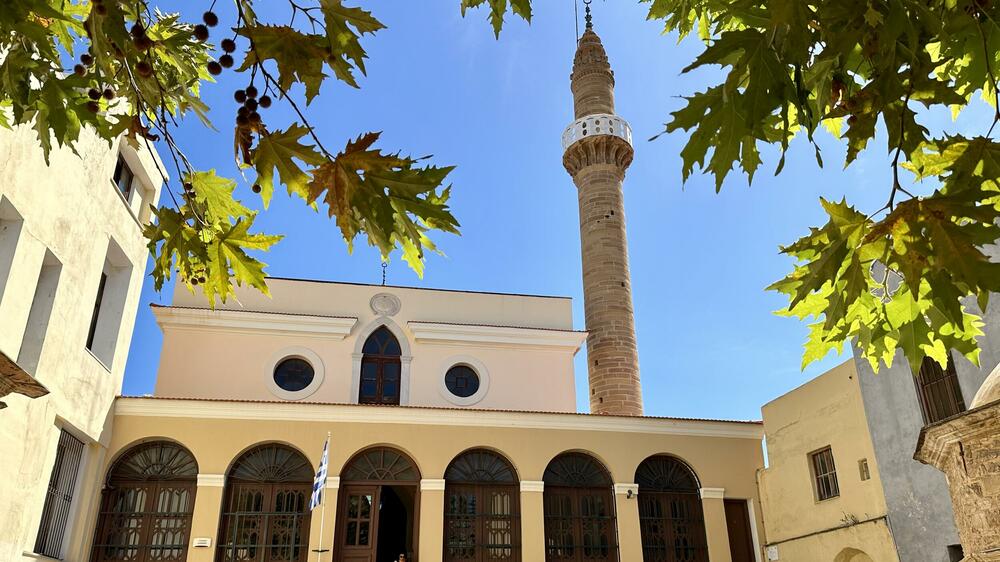
That mosque almost a century later became the Museum of Byzantine Art. It probably kept her alive and - in good shape.
Ferocious handwriting
Chios became a tragic symbol of the Greek liberation war against the sultan's rule. In April 1822, the "Massacre on Chios" took place. Before that, thousands of Greek rebels landed on the island. They could not take the fortress in the city of Chios, which was then called Hora, but it was under siege. The Ottoman government sends 45 soldiers to the island. Their orders are clear: all male residents over the age of twelve, all women over the age of forty, all children under the age of two - to be killed. The punitive expedition killed about 000 Greeks, 25 of them were taken as slaves. It is estimated that between 000 and 45 thousand people escaped the slaughter. They escaped to other Greek islands. The heads and ears of those killed were brought to Constantinople as a gift to the sultan. On Chios, one of the largest libraries in the Aegean was also destroyed - 000 books.
Before the massacre, Chios was a rich island. The annual export of mastic amounted to 50 tons, and the tax from that export went to the Sultan's sister. Greek merchants had their representative offices from Marseilles to Alexandria, but also from Odessa to Moscow. After the Crusader conquest of Constantinople in 1204, Chios was first the prey of the Venetians, and a few decades later the island was taken over by Genoa. It was like that until 1566, when the new master became the Ottoman Empire. It is interesting that under all governments the island enjoyed a certain autonomy. The Turks limited themselves to a military presence in the fortified fortress, built by the Genoese, and left intact the privileges of twenty mastic-producing villages.
All that came to an end in 1822. The "Massacre on Chios" reverberated in Europe. Eugène Delacroix exhibits his painting "Massacre on Chios", Victor Hugo writes his poem dedicated to the massacre and calls it "The Greek Child". In Moscow, they collect money to help the victims of the massacre, London threatens the Ottoman Empire with the termination of diplomatic relations. Although Greece gained independence in 1830, Chios only became an integral part of it in 1912.
In search of precious tears
None of this is visible on the main street of the Aplotaria pedestrian zone. The side streets are full of cafes and restaurants, and the main street, which runs parallel to the promenade on the coast, has almost all the shops that can be seen in other European cities. Here, Chios seems metropolitan. A special charm is given to the street by canvases stretched above it, which protect from the merciless sun.
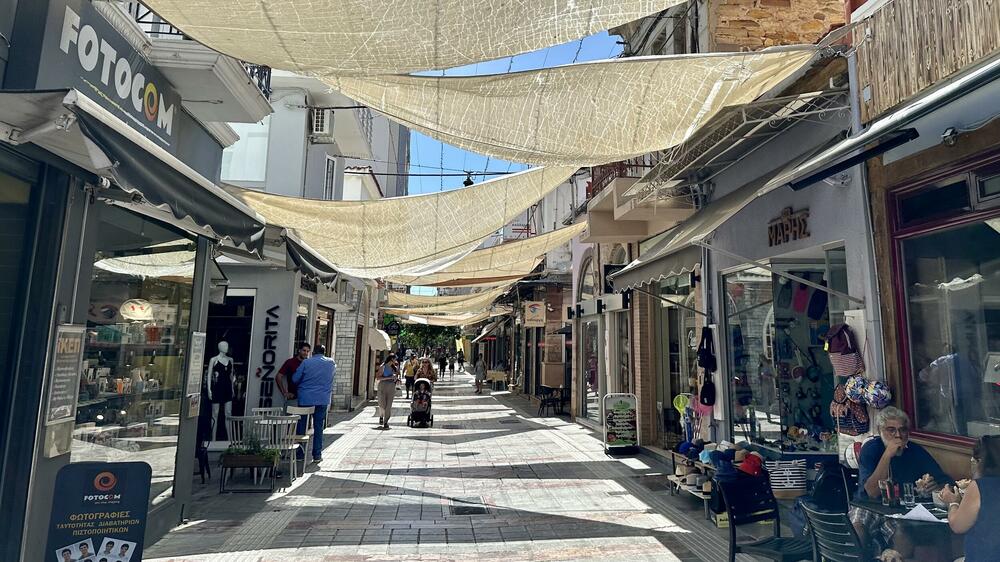
We will walk along this street all the way to the end - to the beautiful church dedicated to the apostle and evangelist John. We are in search of the island's most famous product. It is called "tears of Chios". Mastic is the resin that oozes from the cut trunks of mastic - it's a tree from the pistachio family. When a tree cries, its owner is happy. Because that always means good earnings.
Almost everything is made with mastic here. Cosmetics, sweets, juices, whipping powder. Even in ancient times, it was attributed a beneficial effect on the stomach. The gyros that we ate that day were poured with juices seasoned with mastic.
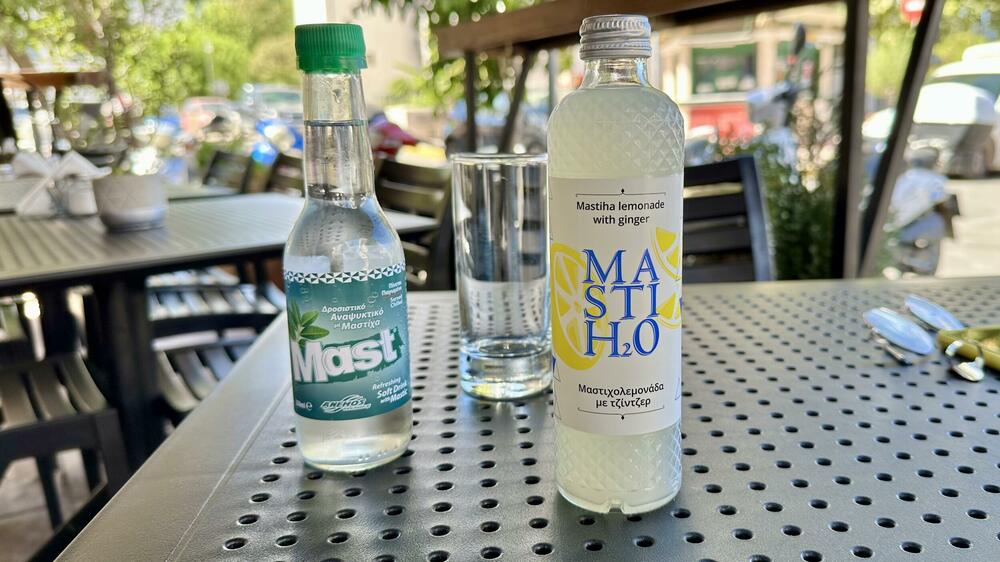
In an older store, we bought mastic that is mixed in cold water, and we can't wait to try it.
Afternoon nap
More than half of the shops close around half past two. Some open at four, some at five. We spent our break on a bench in the shade, enjoying incredibly large peaches that we bought in a grocery store. We just couldn't get past the sunflowers. Then we walked along the coast, the city was waking up again in the late afternoon.
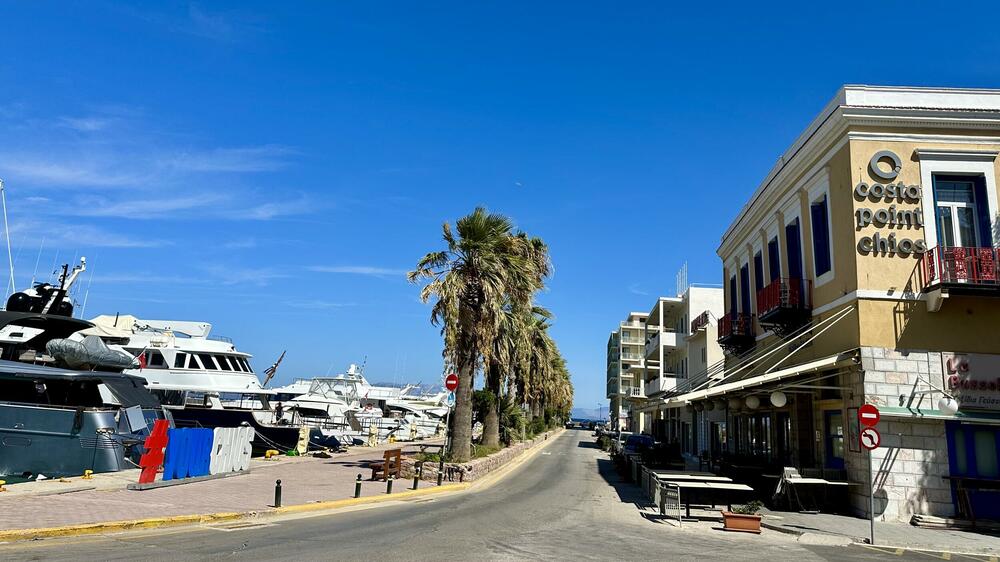
We are a bit worried, whether there will be any customs controls on the evening ferry. We do not know what could be taxed at the EU-Turkey border, we hope that it will not be products with mastic. The sun has set, it will continue to sink for hours into the sea where the Attic king Aegeus sought death because he believed that his son Theseus was dead. Because of that mistake, an entire sea will be named after him.
We shouldn't have worried. The ferry sailed through the western glare towards the Turkish coast, nobody will care about our mastic. We will take our "tears from Chios" with us to Izmir and then to Belgrade.
Bonus video:



